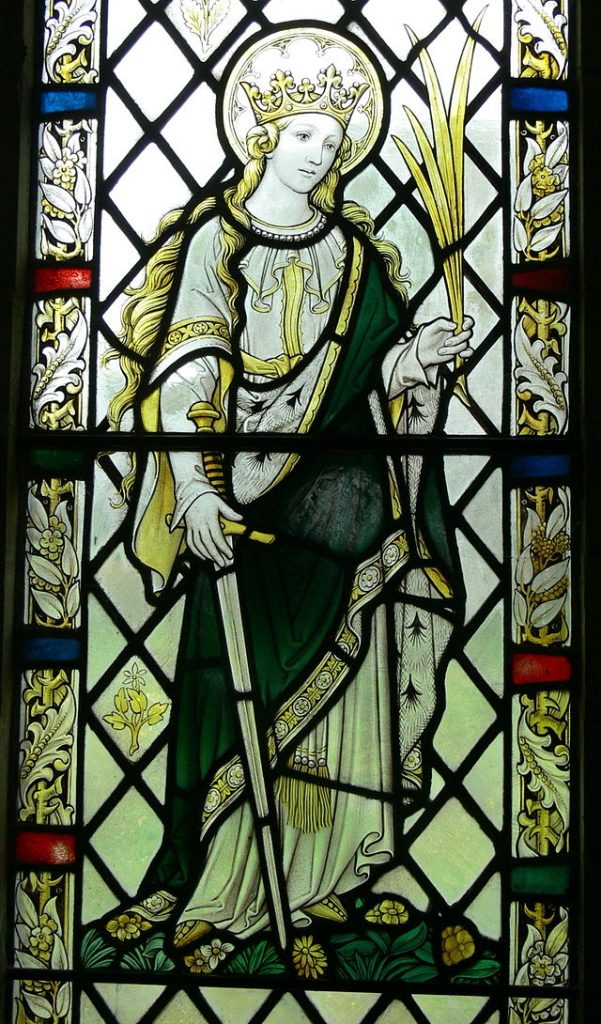The Green Knight Film Review
Part II
by Noelle Weaver
The middle of the film’s tone is full of eerie surrealism, and the viewer can never be sure if what they’re seeing is reality or not. The sepia-toned barren landscapes Gawain travels through offer no comfort, and everyone he encounters on the road is looking to take a piece of him.
For the beginning of my review of The Green Knight, check out the first part here.
An immediate divergence from the poem, where the true sender of the Green Knight is concealed until the end— King Arthur’s sister, the sorceress Morgan Le Fey— is that the film lets us know from the start who summoned the Green Knight. Gawain’s own mother is the sorceress in this story, and she creates the challenge to her brother the king. This makes the story and the game no less mysterious or ambiguous; why does Arthur’s sister challenge his court? And if the Green Knight intends to return the blow in a year and kill Gawain, why would she let her son go to his doom? We’re left to infer that perhaps Morgana is frustrated with Arthur’s lack of acceptance of his nephew Gawain, and intends to punish Arthur. Or maybe the challenge was all for Gawain himself, a chance for Le Frey’s son to prove himself and push him out the door to greatness.
If this is her intent, she succeeds. Gawain becomes a legend in Camelot by beheading the Green Knight, and Arthur himself encourages Gawain to go and see his quest through to further his greatness. The contention between what a man should want and be– to be good, or great — seems to pull Gawain back and forth. He doesn’t want to go out to face an opponent with a right to his head, but he also wants to be a knight and a nobleman. His mother and Arthur urge him towards honor and greatness, while Essel the prostitute wonders why goodness in a man isn’t enough.
Another element from the end of the book is introduced much earlier, and again by Gawain’s mother; the green girdle. Before he leaves, Morgan le Fey gives her son the enchanted sash with the promise that as long as he wears it, he’ll return to her again.
When Gawain sets out, he’s loaded with the armor of a knight, and gifts from his friends and the court. A bell as a token from his lover (not a courtly handkerchief as a sign of affection from a lady), the blessed shield from the queen, the sword of the king, and the enchanted green girdle from his mother the sorceress. These gifts combine the contradictory forces of Christianity and magic that feature in the best of Camelot’s stories. He leaves the city prepared and with the support of his loved ones and his people.
And then Gawain is promptly robbed blind. The first thing that happens on Gawain’s quest is that he’s stripped of everything that should protect him; his armor, his blessed shield with both the five pointed star of knighthood and religious icon of the Virgin Mary and Christ child, the Green Knight’s axe, and even the green girdle. Everything that marks him as a knight, blessed and supported by civilization, is stripped from him, and only Gawain himself is left. When Gawain leaves the walls of Camelot, he’s met with a cruel, brutal, and nonsensical world full of magic and misery. He’s immediately robbed and stripped of everything he brought, from his horse to the green sash his mother promises will protect him. This is a world of wild chaos, the world of the Green Knight.

Wolfgang Sauber, CC BY-SA 3.0, via Wikimedia Commons
Later on, in the house of St. Winifred, he regains one thing he left Camelot with; the Green Knight’s axe. Like Christ carrying his cross to Golgotha, Gawain spends the rest of his difficult journey carrying the weapon that will kill him when he reaches the Green Chapel. Another familiar religious image seems to be that of figures like Mary Magdalene and Veronica cleaning Jesus and wiping his face; King Arthur wipes mud off of Gawain’s face, and other characters echo the tender gesture of touching Gawain’s face, most poignantly at the end of the film. Gawain is far from a virtuous man, but like Jesus, he’s facing the road to his death, and he may be an unlikely king too as we see later on.
What’s more is that whether Gawain wants to be a good man or a great one, he struggles to be either as he stumbles through his journey to survive. Before he leaves, he’s cold to Essel, denying that he’ll have a place for her in his life when he becomes a lord. He ignores the children chasing after his horse from Camelot, and he doesn’t want to pay the boy who has lost his family in a battle in exchange for giving Gawain directions. When he encounters the ghost of St. Winifred, he wants something in exchange for helping her. At every chance to show kindness and mercy, Gawain fails. What he is good at is self preservation. The only companion he accepts is a fox, who he initially tries to shoo away.
These episodes, like Gawain being robbed, encountering the ghost of St. Winifred, seeing giants, and his loyal fox companion are absent from the original story. Despite this artistic license being taken, these encounters further reflect themes from the poem; the nature of chivalry, virtues, a harsh and wild world, and exchange. What’s more is each scene, announced by illuminated letters, is another test of Gawain’s character. The whole journey is a continuation of the challenge of the Green Knight’s game, a test of the knight who accepts it, just as it is in the story.

The penultimate chapter begins when Gawain meets the Lord Bertilak and the Lady in the mysterious country castle, and is much more familiar to readers of the original. When Gawain is exhausted and starving from his brutal journey a few days before Christmas, he stumbles upon a castle in the middle of nowhere, as if it’s awaiting him. There are only three people living there in this version; the lord, the lady, and an eerie blind folded old woman. The hunt, the game of exchange between the Lord, and the temptation of the Lady play out in a bleak fashion as Gawain is offered friendship and further challenges at once.
This Lady is played by the same actress as Essel, Gawain’s love from Camelot, and not for the first time we have to question if how Gawain is perceiving events is reality. The Lady receives much more characterization than in the original; she’s an avid reader, and she copies books in her library, a common practice in the time before printing presses. She’s also an artist, and paints an eerie upside down portrait of Gawain. In yet another exchange, the Lady takes Essel’s token, the bell, from Gawain before she paints him, seeming to take a part of himself too. These gifts help serve to make more sense of the game of exchange the Lord makes to Gawain; in the original, Gawain only receives courtly kisses, while in the film he actually is receiving more tangible gifts as well.
The three nobles share an evening together, under the observation of the silent old woman, and have an fascinating conversation about Gawain’s quest for greatness, and the nature of the Green Knight.
“And this is what you want most in life?” the Lord questions Gawain.
“To be a knight?”
“No, honor. You are not very good with questions.”
Gawain claims, “It is part of the life I want.”
“And this is all it takes for that part to be had? You’ll do this one thing, you return home, a changed man, an honorable man? Just like that?”
“Yes.”
“Oh, I wish I could see the new you. But perhaps we will miss our old friend, and our fun, and our games.”
This single exchange encapsulates the whole point of the movie, and arguably of every single hero’s journey through time. The young hero is inexperienced and lacking in something, whether it’s maturity, wisdom, or wealth, goes on a quest and encounters hardship and overcomes obstacles, defeats the villain, and returns home a changed man. The Gawain in the original story learns that he can’t be perfect, but he’s no worse a man for it. This Gawain blindly seeks honor, and hopes that meeting the Green Knight will somehow transform him into a legendary and worthy knight just as all heroes are by their quests. But we’ve seen how Gawain has refused to grow throughout, and even in this conversation he’s clearly unsure of what he wants. Despite his travels, Gawain is mostly unchanged from how he began the story.
This film isn’t as overtly a horror movie as A24‘s other films like Midsommar or Hereditary, but it keeps you on the edge of your seat as Gawain plunges through Camelot and it’s world as we’ve never seen it before. Every encounter is full of surrealism and uncanny moments, leaving the audience wondering what really is magic, and what is Gawain’s mind playing tricks on him.
The last haunting question The Green Knight has left me with for this part of the review is this; is The Green Knight the perfect Halloween movie, or the perfect Christmas movie?
Stay tuned for the final part of The Green Knight review to look at the shocking conclusion.